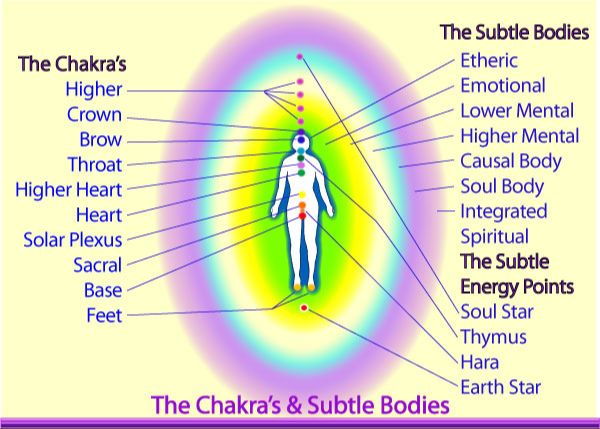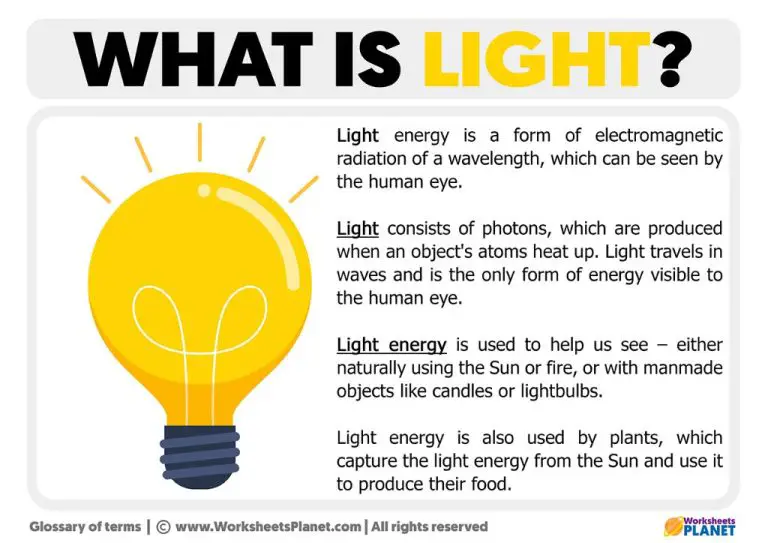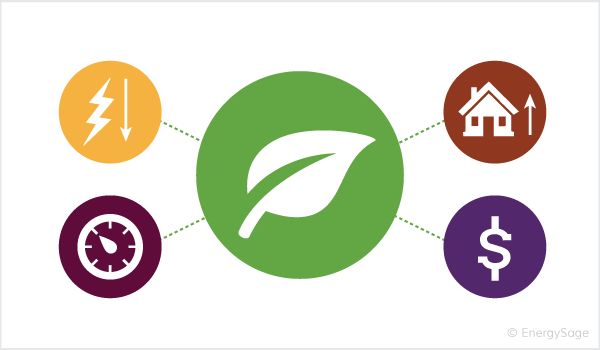What Is Human Energy Called?

Human energy, sometimes referred to as subtle energy, bioenergy, chi, qi, prana, or life force, is the spiritual energy that flows through all living things. Though invisible to the naked eye, human energy is essential to our well-being. Understanding our energetic nature allows us to tap into our full potential and live more harmoniously.
In many cultures around the world, the concept of a human energy field has existed for thousands of years. Ancient healing systems like Traditional Chinese Medicine and Ayurveda emphasize balancing the flow of chi or prana in the body. Though initially viewed with skepticism by Western science, advances in technology have enabled researchers to measure and study this subtle energy more recently.
Learning about the human biofield provides a deeper understanding of our mind-body connection. Our thoughts, emotions, and experiences impact our energy flow, which then affects our physical health. By cultivating positive energy through activities like meditation, exercise, time in nature, and self-care practices, we can enjoy improved mental clarity, vitality, inner peace, and overall wellness.
The Concept of Qi
In traditional Chinese culture, qi (or chi) refers to the vital life force or energy that flows through all things. Qi is an important concept in various Chinese philosophies and religions, especially Taoism and traditional Chinese medicine. Qi is believed to be universal, existing inside every living and non-living thing.
According to Chinese thought, qi flows through invisible channels or meridians within the body. When qi is balanced and free-flowing, health and vitality are maintained. However, when qi becomes unbalanced or its flow is blocked, it can lead to disease and illness. Qi can be affected by a person’s emotions, lifestyle, environment, and diet.
Practices like acupuncture, tai chi, and qigong are believed to unblock qi, restore its natural flow, and bring about healing effects. Herbal medicines are also used to balance qi in traditional Chinese medicine. The goal of many traditional healing practices is to cultivate and harness qi to improve physical, mental and spiritual health.
While qi is an abstract concept with no direct correlate in Western science, some researchers have attempted to measure qi energy and meridians through experiments. However, conclusive scientific evidence has not been established.
Sources:
Are You Leaking Qi? How to Preserve Your Essence
Services | Milwaukie Natural Medicine Clinic
Prana in Hinduism
Prana is an important concept in Hindu philosophy and medicine. The word prana comes from two Sanskrit roots: “ana” meaning “to breathe,” and “pra,” meaning “being alive.” Prana refers to the vital life force or energy that permeates the universe. In the physical body, prana is the breath or vital energy that sustains life (Wikipedia Prana).
According to Hinduism, prana flows through subtle energy channels called nadis and centers of energy called chakras. There are believed to be 72,000 nadis in the subtle body. The three most important nadis are the ida, pingala, and sushumna, which run parallel along the spine. The seven main chakras are energy vortexes located at major points along the spinal column (Understanding Prana, Insight Blog).
Prana enters the body primarily through the breath and is distributed by the lungs and heart. Breathing practices like pranayama yoga help increase and control the flow of prana in the body. Proper flow of prana brings health, while restricted flow leads to disease. Prana not only flows through the physical body but extends outward creating an energetic field or aura (Understanding Prana).
In yoga and Ayurvedic medicine, prana is closely linked to other key concepts like bindu (vital energy point), nadi (energy channel), and chakra (energy center). Mastering the flow of prana allows yogis to achieve higher states of awareness and spiritual enlightenment.
Ki in Japanese Culture
In Japanese culture, ki (気) is considered a vital life force energy that flows through all things. Ki is regarded as the underlying essence that connects the mind, body, and spirit. The kanji character for ki contains the radicals for “rice” and “steam,” representing ki as a type of vaporous spiritual energy.
According to Japanese philosopher Kitaro Nishida, ki represents the intuitive and immediate experience of reality itself. Ki energy flows through the body along pathways called meridians and can become blocked or weakened through stress, injury, or illness. The practice of Ki-Aikido focuses on cultivating and balancing this spiritual energy within oneself and with an opponent.
Ki is believed to be spread about a person’s body in daily life through breathing, meditation, recitation, and other health and wellness practices. By channeling one’s ki and being conscious of how it flows, individuals can gain greater mental strength and self-realization. The notion of ki as life energy permeates Japanese tea ceremonies, martial arts, theater, and other traditional art forms as well.
Overall, ki represents a vital living essence within all things. Harnessing and regulating ki is considered essential for physical, mental and spiritual health in Japanese culture (Source: https://finkdojo.com/ki-energy/).
Chi in Ancient Greece
The ancient Greeks had a concept similar to qi which they called “pneuma.” Pneuma was believed to be the vital spirit or creative force behind all life and was closely associated with breath and air (1).
Like qi, pneuma was thought to be an invisible, motive energy that permeated the world. The Greeks believed it was the mediating element between matter and spirit, linking the physical and immaterial realms. Pneuma animated living things and enabled biological processes like respiration and metabolism (2).
The notion of pneuma as vital spirit tied into Greek philosophy about the human soul. Pneuma was thought to animate the soul and be dispersed throughout the body via the breath. Hippocrates, the famous Greek physician, incorporated theories about pneuma into his medical treatises on health and illness (2).
So the ancient Greek concept of pneuma shared many parallels with qi as a universal life force. Both were seen as essential energies that brought vitality to living things and the environment.
(1) Wikipedia: Qi
(2) Concepts in other cultures that correlate with Qi
The Aura
The aura is perhaps one of the most well-known concepts related to human energy. It refers to an invisible energy field that is believed to surround the human body.[1] Many ancient cultures depicted spiritual leaders with halos around them, representing an aura emanating from their heads.[2] The notion of the aura originated in ancient Hindu texts, which referred to it as prana or the vital energy that animates all living things.[3] Prana was believed to radiate around the body in the form of a luminous halo.[4]
According to esoteric theories, the aura consists of multiple layers or subtle energy bodies that interpenetrate the physical body.[5] These layers correspond to the physical, emotional, mental, and spiritual aspects of a person.[6] The colors and patterns in the aura are said to reflect a person’s health, thoughts, mood, and spirituality.[7] A healthy aura is bright and vibrant, while an unhealthy aura may seem depleted or darkened.[8] The human energy field is believed to be strengthened through practices like meditation, yoga, tai chi, and energy healing techniques.[9]
While the empirical evidence for auras is limited, the concept provides an intriguing metaphor for the human body’s complex energy system. The aura may ultimately reflect more about our inner psychological and emotional states rather than any measurable energetic field.[10] Nonetheless, the notion of the aura remains a prominent feature of energy-based healing modalities and spirituality.[11]
[1] https://stock.adobe.com/search?k=human%20energy%20aura
[2] https://www.shutterstock.com/search/human-energy-field
[3] https://stock.adobe.com/search?k=human%20energy%20aura
[4] https://www.shutterstock.com/search/human-energy-field
[5] https://stock.adobe.com/search?k=human%20energy%20aura
[6] https://www.shutterstock.com/search/human-energy-field
[7] https://stock.adobe.com/search?k=human%20energy%20aura
[8] https://www.shutterstock.com/search/human-energy-field
[9] https://stock.adobe.com/search?k=human%20energy%20aura
[10] https://www.shutterstock.com/search/human-energy-field
[11] https://stock.adobe.com/search?k=human%20energy%20aura
Chakras
Chakras are considered to be energy centers in the body according to ancient Hindu texts and traditions (Johari). There are said to be seven main chakras aligned along the spinal column, each associated with different aspects of the human experience.
The chakras include the root chakra (Muladhara) at the base of the spine, sacral chakra (Svadhisthana) in the pelvic region, solar plexus chakra (Manipura) in the abdomen, heart chakra (Anahata) in the chest, throat chakra (Vishuddha) in the neck, third eye chakra (Ajna) in the forehead, and crown chakra (Sahasrara) at the top of the head. Each chakra corresponds to particular emotions, goals, elements, colors, mantras, and more.
According to energy healing practices, the chakras can become blocked or imbalanced, which may lead to physical or emotional issues. Techniques like yoga, meditation, Reiki, crystals, visualization, and chanting are used to open, align, and balance the chakras. The ultimate goal is to channel subtle energy up through the chakras to achieve higher states of consciousness and enlightenment.
Science of Bioenergy
Modern science is beginning to study and measure subtle energy fields in and around the human body. While concepts like qi, prana, and chi have long historical roots, researchers are now using technology to detect and measure biomagnetic and bioelectric fields produced by the body (1).
Devices such as Superconducting Quantum Interference Devices (SQUIDs) are able to measure extremely subtle biomagnetic fields in the heart and brain (2). Gas discharge visualization cameras and electrophotonic imaging technology can visually capture coronal discharges related to bioenergy fields surrounding the fingers and other parts of the body.
Research has shown that activities like qigong, yoga, meditation, and energy healing can produce detectable effects on these fields, indicating a physiological effect (3). However, more research is still needed to fully understand the nature and function of subtle energy systems in the body. While ancient concepts provide a framework, modern science is just beginning to unravel the mysteries of bioenergy.
Sources:
(1) https://www.youtube.com/watch?v=EpYAwQR6pps
(2) https://www.youtube.com/watch?v=EpYAwQR6pps
(3) https://www.youtube.com/watch?v=EpYAwQR6pps
Measuring Subtle Energy
There have been numerous attempts to measure and quantify subtle energy fields around the human body. Some devices claim to detect and measure this energy, often referred to as a person’s aura or biofield. One example is the use of Gas Discharge Visualization (GDV) technology, which passes a weak electrical current over the fingertips to produce an electrophotonic emission that is captured photographically. Researchers have used GDV imaging in studies on energy healers and energy medicine approaches, finding certain patterns in the electrophotonic emission of practitioners and patients [1].
However, many mainstream scientists have questioned the reliability of these detection methods. They argue there is insufficient evidence that these instruments are actually measuring a tangible energy field rather than electrical properties of the skin or electromagnetic artifacts. Skeptics caution that more rigorous, replicated research is needed before claims around aura imaging and biofield measurements are accepted within mainstream science [2].
Overall the existence of subtle energy fields around the human body remains controversial. While some pioneering researchers report promising findings, more concrete evidence is still needed to convincingly demonstrate these energies can be accurately measured.
Conclusion
In summary, there are many different concepts and terms used throughout history and across cultures to describe the subtle energy that exists within and surrounds human beings. While names like qi, prana, ki, chi, and aura describe this energy in mystical or spiritual terms, modern science has also begun measuring and studying this bioenergy field through devices like EEGs. Understanding the human energy field has implications for health, psychology, and our interconnectedness with others. Though the specifics are still debated, the concepts point to humans being more than just physical bodies—we also have an energetic dimension. Harnessing and balancing this energy allows for greater wellbeing, vitality, and awareness of our place within the universe.






